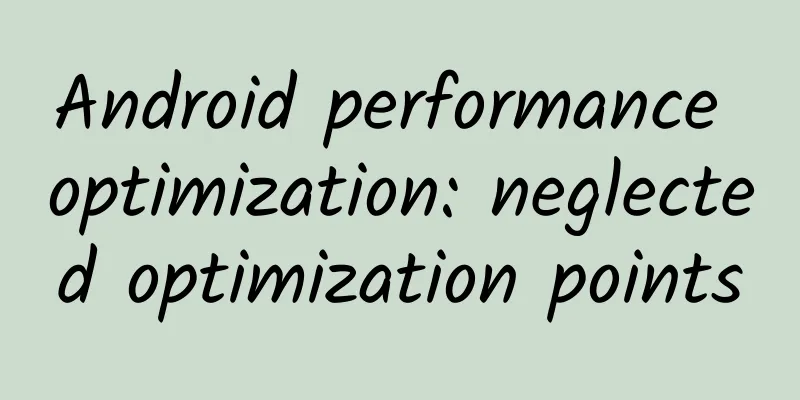Be careful! Ubiquitous lasers may ruin your eyes

|
A recent news report said that a boy in Nantong, Jiangsu Province shone a laser pen into his left eye 51 times in a row. Suddenly, everything went dark in front of his eyes and he could not see anything. Doctors found that due to too many exposures, the boy's left eye could no longer fully recover its vision. This is really sad and regrettable news. Laser pens are relatively dangerous toys. If parents had not let their children play with laser pens at will, this tragedy might not have happened. In fact, many people may not have a clear concept of laser. For example, how is laser generated? What is the function of laser? What harm does laser bring? Unless you are a researcher or practitioner in the field of laser, it is estimated that others will not be able to answer them all at once. In order to avoid being at a loss for words when children ask these questions, let’s review some common knowledge about lasers today! 01 What is Laser? From our intuitive impression, laser is a very bright and strong beam of light. So which one of the following pictures is a laser? Different types of luminous bodies Image source: Wikipedia The answer is obvious. The left picture is just a beam from an ordinary searchlight, the middle picture is the light from a light-emitting diode (LED), and the right picture is the famous laser. The light-emitting principles of these three types of light are different. The internal structure of a searchlight is similar to that of a flashlight, which is mainly composed of a light source and a reflector. The light emitted by the light source changes direction under the action of the reflector and is emitted outward in the form of a beam. If a lens is added in front of the light source, the angle of the beam can also be adjusted. Internal structure of searchlight Source: self-made by the author Light-emitting diodes are a type of semiconductor diode, which consists of two parts: P-type semiconductor and N-type semiconductor. This is its core component. When powered on, the negative charge in the N region and the positive charge in the P region combine with each other, and many photons are excited at the same time. These photons propagate freely in all directions around, thus forming scattered light. Our common luminous billboards and neon lights are composed of a large number of light-emitting diodes. Internal structure of a light-emitting diode Source: self-made by the author Laser is a special kind of light emitted by a laser , and the laser diode shown in the figure below is a type of laser. This laser diode is based on a light-emitting diode, with a special "resonant cavity" added between the P region and the N region. A full reflection mirror is installed on one side of the cavity, so photons cannot pass through; a partial reflection mirror is installed on the opposite side, so light can pass through when the intensity reaches a certain threshold. Internal structure of a laser diode Source: self-made by the author When the laser diode is powered on, photons are first excited by the combination of positive and negative charges, a process similar to that of a light-emitting diode. However, due to the small number of these photons, they are "trapped" in the resonant cavity and can only bounce back and forth between the two mirrors like a ping-pong ball. When a photon hits a semiconductor atom, the collision between the two will stimulate new photons to join the rebound. Driven by continuous current, more and more photons are stimulated in the collision and continue to participate in a new round of rebound and collision. Under the influence of this positive feedback "avalanche effect", the number of photons increases rapidly and eventually passes smoothly through the partially reflecting mirror on the right, forming a beam of laser that emanates outward. Although this type of laser diode is very common in life and is produced in large quantities, it is not the earliest "elder". The world's first laser was the ruby laser invented by American scientist Maiman in 1960. This laser uses a spiral flash tube as the excitation source for photons, and the ruby column is the resonant cavity used to gain amplify photons. Two years later, Robert Hall's team at General Electric Research Laboratory invented the first semiconductor laser using gallium arsenide as the material. In addition, common lasers include gas lasers, liquid lasers, and light lasers. Except for the different working media, their working principles are similar. Ruby laser schematic source: Wikipedia 02 What are the characteristics of lasers? Compared with ordinary light such as sunlight and lamplight, laser is more "pure" . Ordinary light generally scatters in all directions (photons move in different directions) and is composed of many different colors of light (photons have different wavelengths), while laser beams are composed of photons with a single wavelength and highly consistent movement direction , so they are monochromatic, unidirectional and high-energy . Comparison of ordinary light (top) and laser (bottom) Source: self-made by the author The unidirectional nature of lasers makes it impossible for human eyes to see the laser from the side, and it can only be vaguely seen when scattered by dust in the air. This is one of the reasons why people tend to ignore the dangers of lasers - after all, compared with the dazzling searchlights and high-brightness LED lights, lasers are not dazzling at all and do not seem to be that dangerous. Tyndall phenomenon can make laser visible Source: Baidu Encyclopedia But in fact, lasers are very dangerous! Because lasers have high energy , they can be used to cut metals, ceramics, plastics and other materials; they can make permanent marks on the surface of materials; they can also be used for welding to form uniform and strong welds. High-energy laser beams can even be used to manufacture advanced laser weapons specifically designed to deal with various aircraft in the air. Laser cutting source: http://www.hrjgcn.com/news/190.html Laser welding source: https://www.whsclaser.cn/xinwenzixun/489.html Schematic diagram of laser weapon Source: People's Daily Online In addition, lasers have strong coherence , which means that the phase relationship between the individual photons in the laser beam is fixed and does not change randomly. This enables the laser to form a stable interference pattern, and also enables the laser to be modulated and amplified, thereby realizing the transmission and processing of information . Fiber optic communication uses the coherence principle of lasers to transmit lasers carrying a large amount of information over long distances in glass fibers, so that we can connect to the Wi-Fi at home at any time. Fiber source: https://www.gl268.com/detail/443 What’s amazing is that lasers can also be used in the medical field , capable of cutting, ablating, coagulating and other treatments on human tissues. It has the advantages of less trauma, less bleeding and faster recovery. It is widely used in ophthalmic surgery, skin beauty, tumor treatment and other fields. Lasers can be used in many fields, so they are almost everywhere in life. 03 Lasers pose a huge threat to human eyes Laser is an important emerging technology for industrial upgrading written into China's "13th Five-Year Plan" "Made in China 2025". However, as a product of modern science and technology, laser is also a double-edged sword - not only has a wide range of application value, but also has huge potential hazards to the human body, the most serious of which is that it can cause irreversible permanent damage to the eyes. When the laser is directed at the eye, the beam passes directly through the cornea and lens and directly onto the macular area of the retina. This area is where the human eye has the sharpest vision, but the heat dissipation capacity is very poor. Once the energy carried by the laser exceeds a certain threshold, the photoreceptor cells in the macula will be destroyed due to the rapid increase in temperature. In short, they will be "cooked" . It can be seen that laser is very harmful to the human eye! According to surveys, the United States receives an average of more than 20 reports of laser-related injuries each month, most of which are injuries to the eyes. It seems that naughty children are everywhere. Dot-shaped yellow-white lesions that appeared after being irradiated by laser Source: Sichuan Online It should also be noted here that the laser emitted by the laser pen belongs to the visible light range, so we can easily avoid direct laser exposure to the eyes. However, some cameras, radars and other equipment can emit infrared lasers and ultraviolet lasers that are invisible to the human eye. These invisible lasers can also cause damage to the human eyes , so don't get too close and stare at them! References: [1] Liao Lifen, Ma Yunfeng, Cheng Wang, Liu Hao. Analysis of the current status of laser product safety and hazard prevention and control management[J]. China Inspection and Testing, 2018, 26(02): 63-64. DOI: 10.16428/j.cnki.cn10-1469/tb.2018.02.018. [2]Laser. Wikipedia. https://zh.wikipedia.org/wiki/%E6%BF%80%E5%85%89 Author: Liuhuo Engineer at a research institute of weapons industry |
<<: Why did the human brain evolve to be so large?
>>: If the whole of China is a class, Tibet will be the classmate who reaches the ceiling of art!
Recommend
APP offline promotion: How to do a good job in offline promotion? Ground promotion plan, event planning case!
Ditui , as the name suggests, means ground promot...
I encountered a lizard three times while on an outing, and it seemed to be the same one?
If you see a small lizard running among the grass...
How can user operations improve referral rates?
Today I would like to talk to you about some thou...
How should new operators find the key points of APP product operation!
When we operate a new APP or product, a common pr...
Livestreaming sales training camp: community + short video + livestreaming sales: earning 100,000 yuan from one livestreaming
Course Catalog of Live Streaming Thinking Six tho...
When you go out, you'll get covered in flies and be stuck under trees. These little bugs are the most annoying in spring and summer!
I believe you must have had this experience: wear...
How to plan a promotional event to increase followers?
For new media operations, event planning ability ...
The future of mobile app development from the history of middleware
In the field of mobile development, we found a ve...
Scientists make milk like beer. Will it make milk taste better?
People who pay attention to health know that drin...
How can a newbie on Douyin become a big V? Remember these 7 creative methods
When working in new media , choose a popular plat...
47! The first batch of national civilized tourism demonstration units are here
On November 18, the National Tourism Standardizat...
What does the information flow advertising model mean?
Information flow advertising refers to a form of ...
British Prime Minister announces delay in banning fuel vehicle sales, British automakers worry about difficulty in transition
British Prime Minister Rishi Sunak announced an i...
How to quickly build a data operation and analysis system?
Regarding the question of how to quickly build a ...
4399 mini game website optimization strategy analysis, SEO success case analysis!
In the mini-game industry, there is a website tha...









